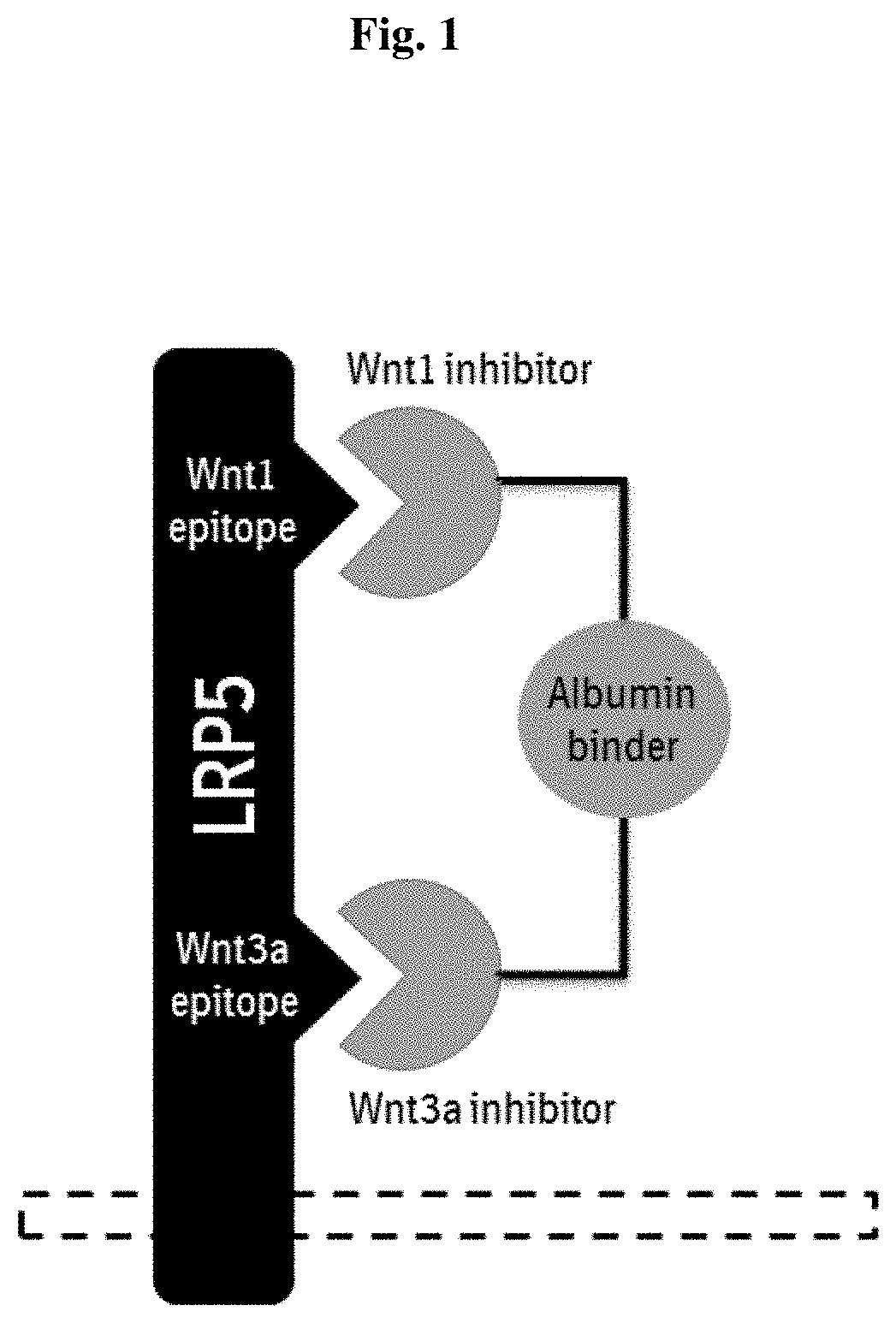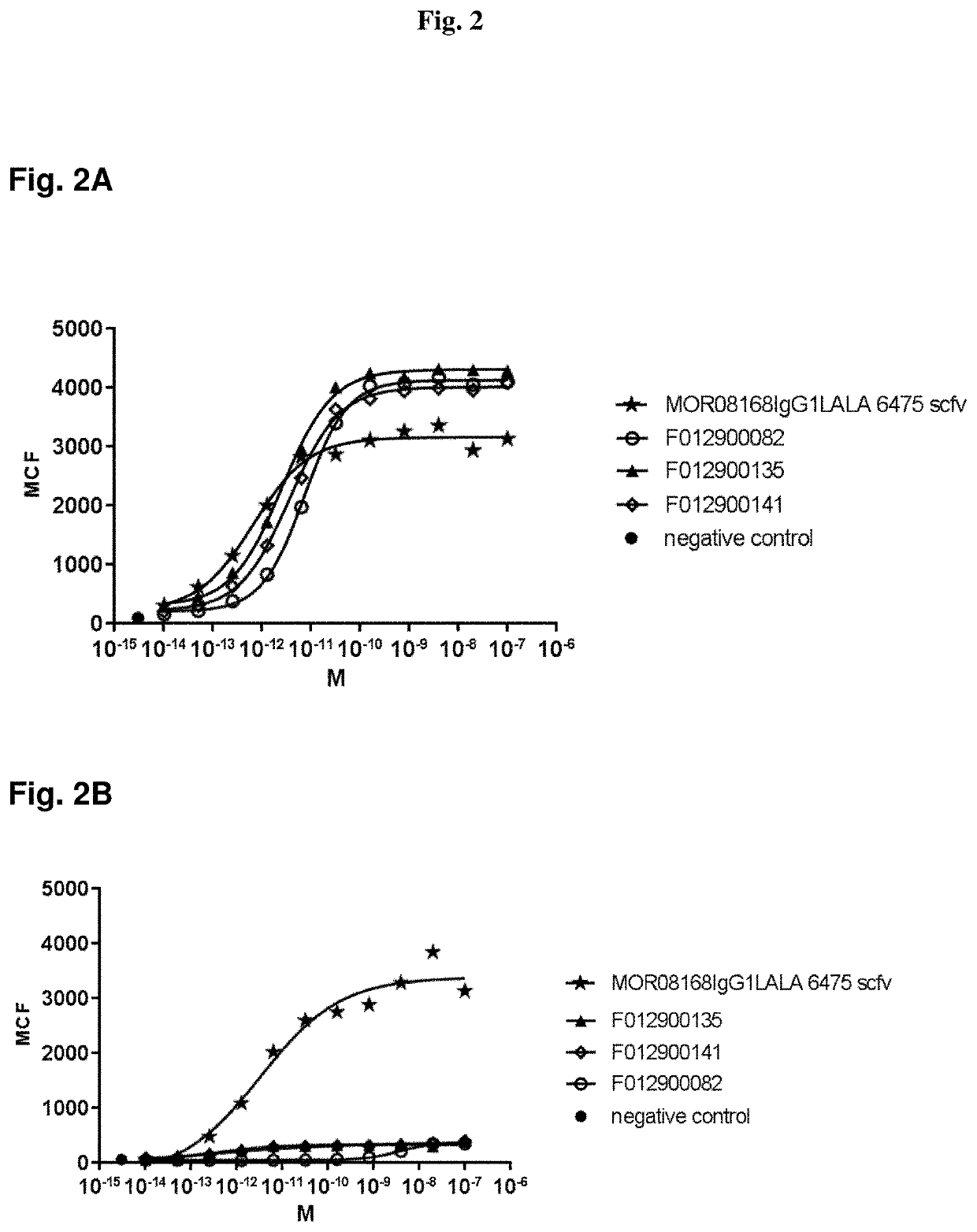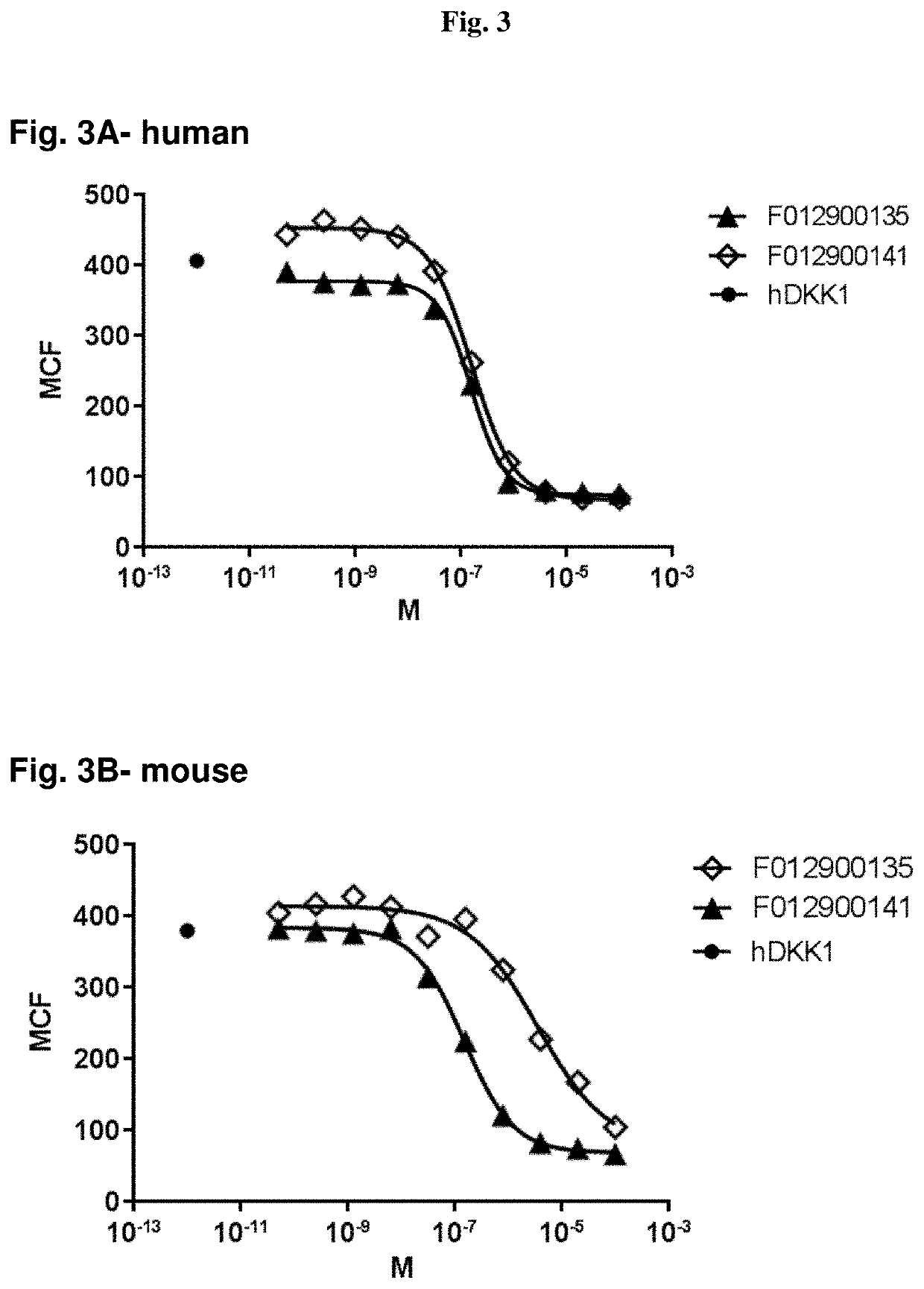Polypeptides antagonizing wnt signaling in tumor cells
a polypeptide and tumor cell technology, applied in the field of polypeptides antagonizing wnt signaling in tumor cells, can solve the problems of invivo gastrointestinal tract toxicity, progressive architectural degeneration, severe body weight loss and mortality from colitis and systemic infection, etc., to achieve long-lasting stability, easy to manufacture, and more soluble
- Summary
- Abstract
- Description
- Claims
- Application Information
AI Technical Summary
Benefits of technology
Problems solved by technology
Method used
Image
Examples
first preferred embodiment
[0186]Polypeptides comprising a first ISVD having the following CDR sequences:
(SEQ ID NO: 1)CDR1: TYVMG(SEQ ID NO: 2)CDR2: AISWSGGSTYYADSVKG(SEQ ID NO: 3)CDR3: SRGTSTPSRASGVSRYDY,
[0187]and a second ISVD having the following CDR sequences:
(SEQ ID NO: 10)CDR1: INAMG(SEQ ID NO: 8)CDR2: AVSSGGSTYYVDSVKG(SEQ ID NO: 9)CDR3: ETGPYGPPKRDY.
Second preferred embodiment: Polypeptides comprising a first ISVD having
[0188]the following CDR sequences:
(SEQ ID NO: 4)CDR1: RYAVA(SEQ ID NO: 5)CDR2: AITWSSGRIDYADSVKG(SEQ ID NO: 6)CDR3: DRRPRSTGRSGTGSPSTYDY.
[0189]and a second ISVD having the following CDR sequences:
(SEQ ID NO: 7)CDR1: IGAMG(SEQ ID NO: 8)CDR2: AVSSGGSTYYVDSVKG(SEQ ID NO: 9)CDR3: ETGPYGPPKRDY
Third preferred embodiment: Polypeptides comprising a first ISVD having the following
[0190]CDR sequences:
(SEQ ID NO: 1)CDR1: TYVMG(SEQ ID NO: 2)CDR2: AISWSGGSTYYADSVKG(SEQ ID NO: 3)CDR3: SRGTSTPSRASGVSRYDY
and a second ISVD having the following CDR sequences:
CDR1:(SEQ ID NO: 7)IGAMGCDR2:(SEQ ID NO: 8)AV...
example 1
[0329]Immunization of llamas with LRP5 for the induction of humoral immune responses
[0330]Several protocols for the immunization of llamas needed to be worked out and implemented for identification of LRP5 binding VHH domains: Llamas were initially immunized with recombinant extracellular domains of LRP5 protein (mouse). However, functional characterization of the above mentioned LRP5 recombinant protein revealed that the recombinant protein was not properly folded. Thus, further work was required to develop suitable antigens for immunization. As a work-around, llamas were immunized with HEK293 cells stably transfected with human LRP5 or cynomolgus (cyno) LRP5. However, also then, only very low expression of human or cyno LRP5 could be achieved, by transient or by stable transfection, and using different cell lines (HEK293 and CHO). Thus, even further work was required to achieve sufficient expression of LRP5. In the end, and after some unsuccessful trial and error, this could be ac...
example 2
[0333]Isolation of LRP5 binding monovalent VHH domains (VHHs)
[0334]Library construction:
[0335]Total RNA was extracted immediately following collection of the immune tissues, and RNA integrity and concentration was verified. cDNA samples were made from these RNA preparations. Nucleotide sequences encoding VHHs were amplified from the cDNA samples in a one-step RT-PCR reaction. The 700 bp amplicons specifically amplified from the IgG2 and IgG3 cDNAs in the sample were isolated from agarose gel and subsequently used as template in a nested PCR reaction. The PCR products were subsequently digested with SfiI and BstEII and ligated into the corresponding restriction sites of phagemid vector pAX50. The ligation mixtures were electroporated into Escherichia coli TG-1. The resulting pool of transformants constituted the genetic diversity of the phage display library.
[0336]pAX50 is an expression vector derived from pUC119, which contains a resistance gene for ampicillin and the lac promoter f...
PUM
 Login to View More
Login to View More Abstract
Description
Claims
Application Information
 Login to View More
Login to View More - R&D
- Intellectual Property
- Life Sciences
- Materials
- Tech Scout
- Unparalleled Data Quality
- Higher Quality Content
- 60% Fewer Hallucinations
Browse by: Latest US Patents, China's latest patents, Technical Efficacy Thesaurus, Application Domain, Technology Topic, Popular Technical Reports.
© 2025 PatSnap. All rights reserved.Legal|Privacy policy|Modern Slavery Act Transparency Statement|Sitemap|About US| Contact US: help@patsnap.com



